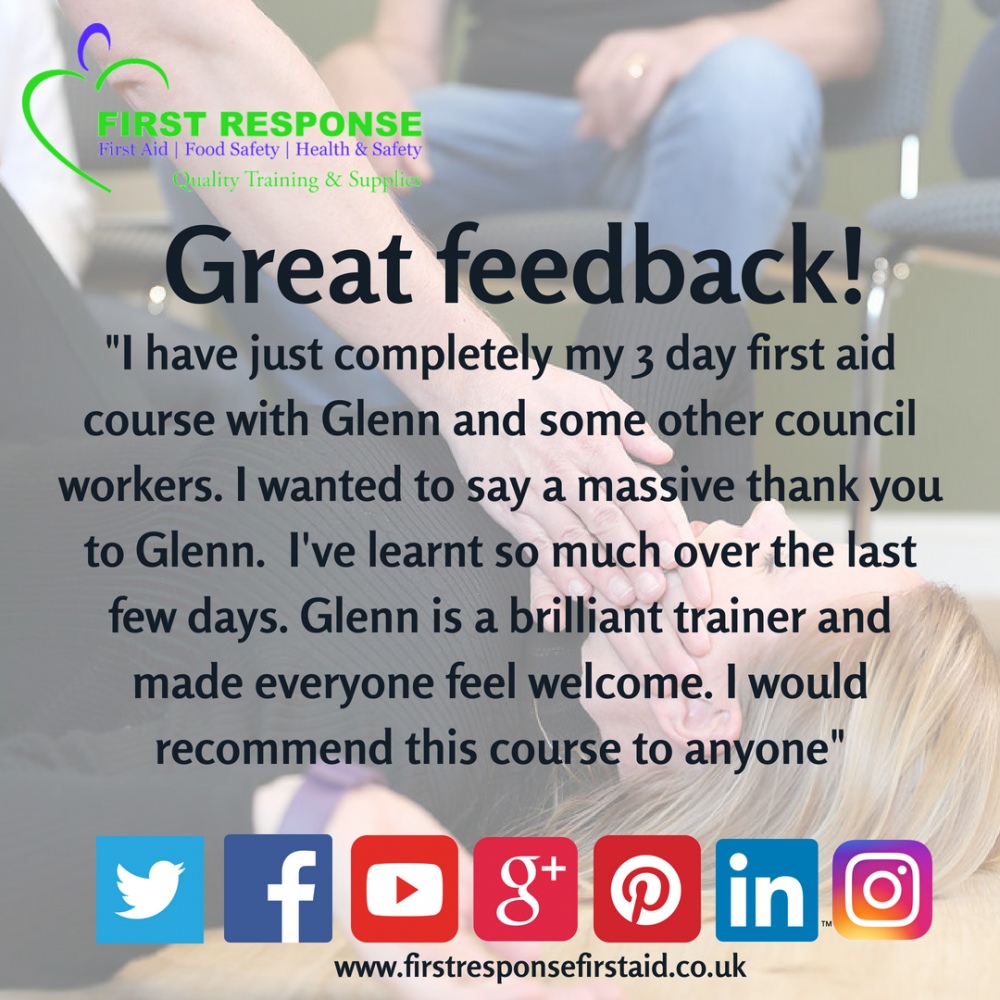Fun in the sun!
Continuing our monthly series of first aid tips, this month we are looking at keeping safe in the sun and avoiding sunburn, but also what to do if you have had too much sun.
Sunburn is caused by over-exposure to the sun’s the ultraviolet (UV) rays. Remember, this can happen on a windy or cloudy day, too!
The best way to avoid getting sunburnt is to avoid too much sun, by covering up with clothing and/or wearing sun cream.
Sunburn usually causes the skin to become red, sore, warm, tender and occasionally itchy. It may blister and after a few days the skin may peel off and will normally heal within a week.
It is important to try to avoid sunburn, because it can increase your chances of developing serious health problems, such as skin cancer, in later life.
4 great ways to stay safe in the sun
1) The skin should be protected from strong sunlight by covering up with suitable clothing, seeking shade and applying sunscreen.
Consider wearing a wide-brimmed hat that shades the face, neck and ears and a long-sleeved top, trousers or long skirts in fabrics that do not allow sunlight through.
Sunglasses should have wraparound lenses or wide arms with the CE Mark and European Standard EN 1836:2005.
2) When buying sun cream, make sure it's suitable for your skin and blocks both ultraviolet A (UVA) and ultraviolet B (UVB) radiation. The label should have the letters "UVA" in a circle logo and at least 4-star UVA protection and at least SPF15 sunscreen to protect against UVB rays.
The majority of people do not apply enough sunscreen. The amount of sunscreen needed for the body of an average adult to achieve the stated sun protection factor (SPF) is around 6 to 8 teaspoons of lotion.
If you plan to be out in the sun long enough to risk burning, sunscreen needs to be applied twice, once half an hour before going out and then again just before you go out.
Sunscreen should be applied to all exposed skin, including the face, neck and ears (and head if you have thinning or no hair), but a wide-brimmed hat is better.
Water-resistant sunscreen is needed if sweating or contact with water is likely.
Sun cream needs to be reapplied after you've been in water (even if it is "water-resistant") and after towel drying, sweating or when it may have rubbed off. Otherwise re-apply every 2-3 hours.

3) Take particular care if swimming or boating, as water intensifies the sun’s rays, so regularly go indoors or move into shade.
Try to avoid being in the sun between 11:00 am and 3:00pm, when the sun’s rays are strongest.
4) It is vitally important to drink plenty of water in the heat – even if you do not feel thirsty. Continually encourage children to drink lots of water too as dehydration can quickly lead to heat exhaustion.
Extra advice for babies and children
- Children aged under six months should be kept out of direct strong sunlight.
- From March to October in the UK, children should cover up with suitable clothing and spend time in the shade (particularly from 11am to 3pm)
- Wear at least SPF15 sunscreen
There’s a great video here https://www.nhs.uk/Video/Pages/how-to-apply-sunscreen.aspx about applying sunscreen.
How long it takes for your skin to go red or burn varies from person to person. The Cancer Research UK website has a handy tool where you can find out your skin type, to see when you might be at risk of burning. http://www.cancerresearchuk.org/about-cancer/causes-of-cancer/sun-uv-and-cancer/am-i-at-risk-of-sunburn

5 things to do if you're sunburnt
- Get out of the sun as soon as possible, head indoors or into a shady area.
- Cool off under a luke warm shower for at least 10 minutes or apply repeated cool, wet towels or flannels for about 15 minutes.
- Apply calamine lotion or after-sun lotion to help soothe the skin.
- Take painkillers such as ibuprofen or paracetamol to relieve any pain – aspirin should not be given to children under 16.
- Drink plenty of water to rehydrate.
When to seek medical advice
Heat exhaustion can come on suddenly following exposure to the sun, causing a raised temperature, feeling sick or vomiting, dizziness, a headache, or stomach cramps and can lead to collapse. Re-hydrate fast with water or an isotonic sports drink. Seek medical advice.
You should also see your GP if a young child or baby has sunburn, as their skin is particularly fragile.
You should contact your GP or the NHS 111 service if you feel unwell or have any concerns about your sunburn, particularly if you are burnt over a large area or have any of the more severe symptoms listed below.
Signs of severe sunburn include:
- blistering or swelling of the skin
- chills
- a high temperature of 38C (100.4F) or above in adults, or 37.5C (99.5F) or above in children under five
- dizziness, headaches and feeling sick (symptoms of heat exhaustion)
Very occasionally, hospital treatment may be needed.
On our First Aid courses (which run near you every week) First Response First Aid cover what to do for heat exhaustion and heat stroke, so why not make 2018 the year you learn how to save a life? Book here.





















.png)















